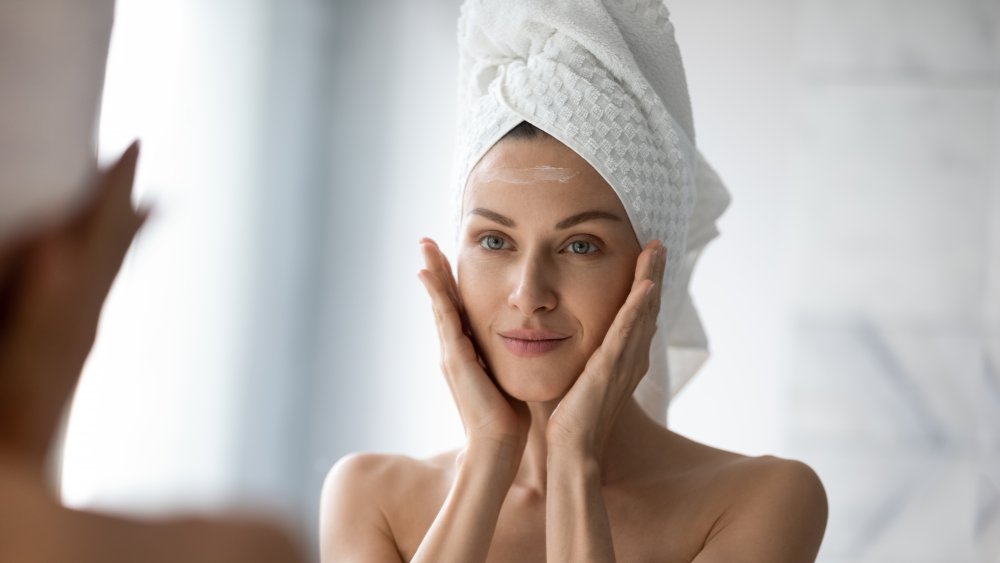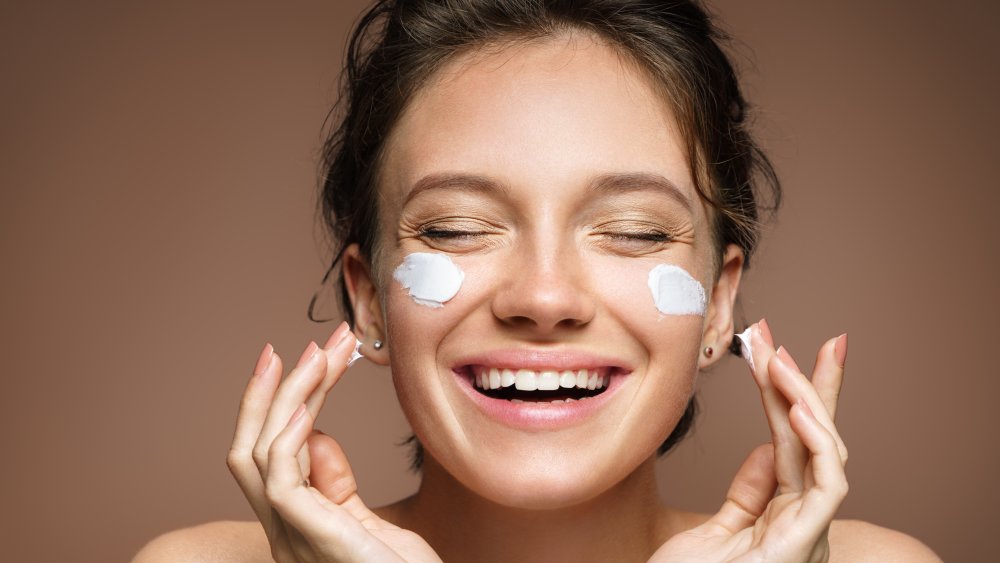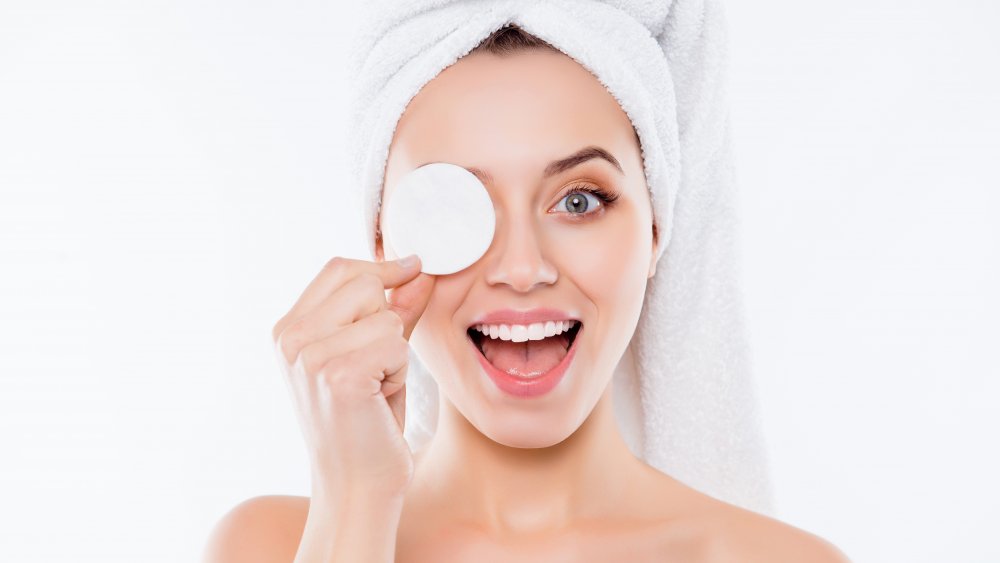Here's How To Tell You're Using The Wrong Moisturizer
A good skincare routine is as important as working out regularly, eating right, getting enough sleep, and drinking plenty of water. Without it, your skin doesn't have the requisite armor to battle the elements and emerge victorious. Everybody's daily routine is different, dependent on your skin itself (or at least it should be), but if there's one thing we can all agree on it's that moisturizer is imperative.
As dermatologist Suzanne Friedler explained to Women's Health, "[Moisturizers] promote skin hydration and overall health, helping to rebuild a barrier that protects your skin after you've cleansed your face." And yet, even if you're slathering it on religiously, there's a risk your moisturizing routine could be adversely affecting your skin if you're not using the right kind. Here are some surefire ways to figure out whether your go-to moisturizer is actually the right one for you and your skin.
Moisturizer should make your skin feel soft, smooth, and hydrated
Moisturizers should leave your skin feeling hydrated but not shiny. If yours leaves your face looking like it's ready to fry an egg on, you may have oily skin or simply need to steer clear of oil-based formulas. "Instead, seek out moisturizers with primary ingredients like glycerine, dimethicone and niacinamide," Friedler advised Women's Health. Likewise, if your moisturizer is making your skin break out, get rid of it immediately. This could also be caused by oil-based products. However, in addition to the aforementioned ingredients, you'll also want to seek out non-comedogenic and non-acenegenic moisturizers. Those containing salicylic acid and retinol that will also help.
Moisturizer is supposed to make your skin soft and smooth. If yours is still dry and flaky even after using it, you might need something that's heavy duty. Brands with ceramides will help, as will hylauronic acid, which assists with retaining water. If your skin is getting red and irritated, it may be sensitive, so steer clear of strongly fragranced moisturizers, instead opt for the hypoallergenic kind.
If your skin is reacting badly, change your moisturizer
One of the biggest signs you're using the wrong moisturizer is white bumps. As dermatologist Rutledge Forney advised Southern Living, these aren't spots and shouldn't be popped. "This is very common if [you're] using a body moisturizer on the face, but can also happen with moisturizers which are too heavy," she advised. Always use products specifically for your face on your face, as body lotion can irritate it.
Bear in mind, too, that your skin requires a lighter moisturizer in summer than it does in winter, so you may need to change up your routine according to the seasons. However, it always requires SPF so ensure your moisturizer is properly equipped. Likewise, Dr. B. Fred Bodie advised, "Extremely dry skin or skin that is irritated by moisturizers can be helped by using mineral oil to take off makeup." Use Vaseline and mineral oil sparingly to further moisturize angry skin. It may take some trial and error, but your face will thank you for it (literally, because that's where your mouth is).


